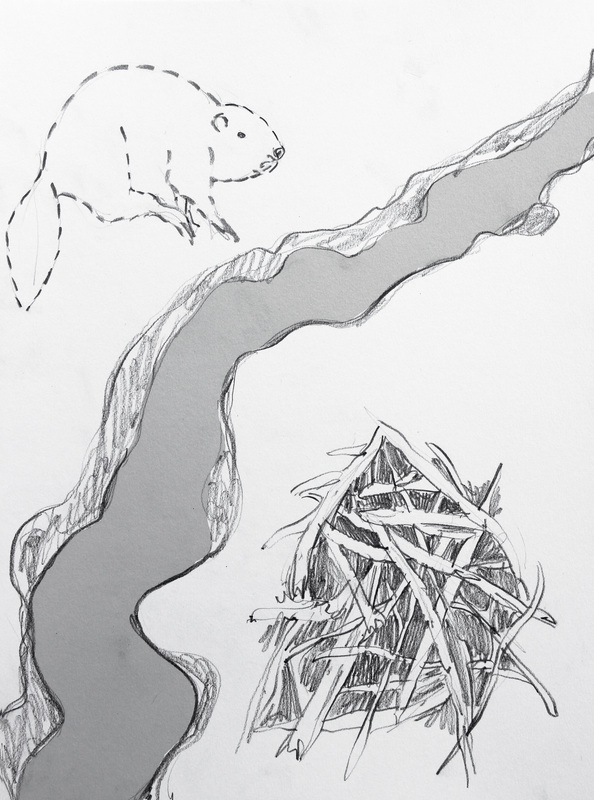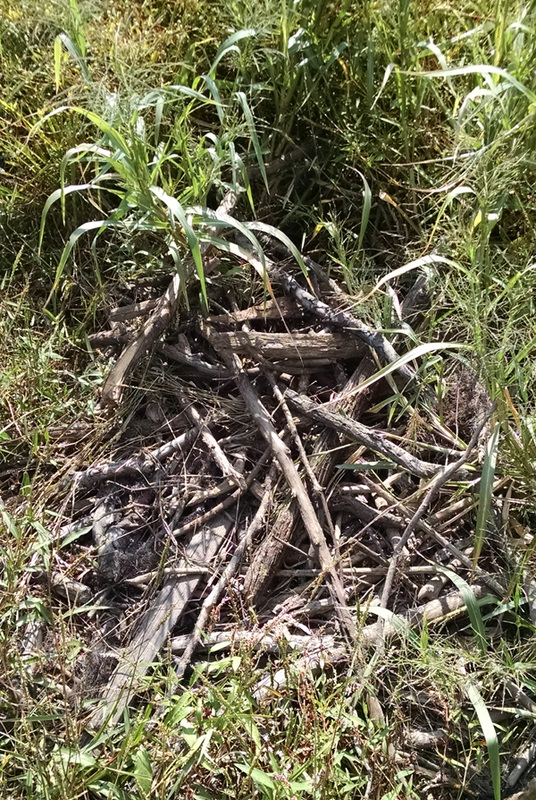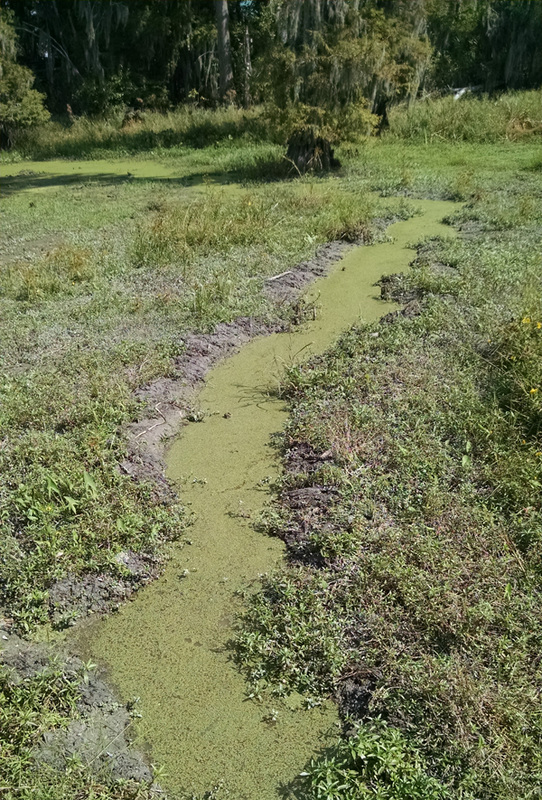As you know, animals are mobile, and often survival for them depends on not being seen more often than necessary. Therefore, we people who want to look at them sometimes have to gain satisfaction from interpreting the signs that the animal leaves behind. In this case, you can tell that beavers are active because of the canal they’ve recently dug on one side of the main stream channel. And there is a pile of sticks on the stream bank that was made by beavers – it might be part of a lodge. Since my Swamp Drawing Project is about things that I actually see at the Phinizy Swamp, I’ve indicated a beaver in my drawing only through a dotted outline.
Castor canadensis is the largest rodent in North America. Their upper incisors continue to grow throughout their lives, and are continually ground down by chewing on wood. Beavers close their nostrils and ears as well as their eyes while they dive underwater. They can even close their mouths behind their front teeth, so that they can dive while carrying a stick in their mouths without ingesting water. Their back feet are webbed for swimming.
The beaver is a wetland animal – it lives its life by maintaining wetlands through damming streams. Many landowners have been irritated when beavers move in and dam up streams, flooding the land. But it turns out that the wetland creation behaviors of beavers have significant ecological benefits. Beaver activity tends to increase streambank vegetation and general biodiversity in dry areas over time; it also creates more open water area even in drought years.
Beavers fell trees to build dams and lodges. The inner bark and leaves of the tree are a major food source for them. The lodges are made of sticks, grass, and mud. They tend to be built so that there is an underwater entrance. A major function of a dam from a beaver point of view is to ensure water depth around the lodge.
Another way you might encounter a beaver is by hearing it. Beavers have a broad, flat tail that they slap against the surface of the water as a warning to potential predators. To me, the tail slap can sound like a cement block being dropped into water – it’s startling.
Beavers are monogamous, but if their partner dies, they will look for someone new. They live for 10 to 20 years in the wild. Their main predators in our area are people and probably coyotes. People kill beavers for sport or for their fur or when they feel that beavers are harming land by building dams. People also kill beavers by destroying wetlands and through pollution.
For more information on visiting the Phinizy Swamp: http://phinizycenter.org/



 RSS Feed
RSS Feed